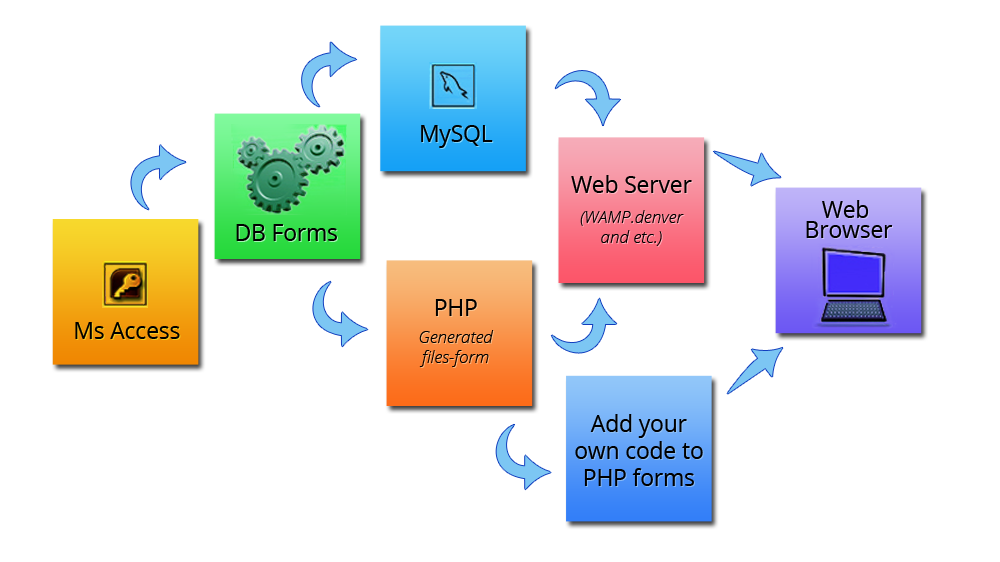
Debugging PHP
1. Error Reporting
The first step in debugging PHP is enabling error reporting. This ensures that all errors, warnings, and notices are displayed.
Example:
Add the following lines to your PHP script or configuration file (php.ini):
error_reporting(E_ALL); ini_set('display_errors', 1);
This setting displays all types of errors during development. However, remember to disable error display in production environments to avoid exposing sensitive information.
2. PHP Error Logs
Instead of displaying errors on the screen, you can log them to a file for later review. This is especially useful for debugging issues in production environments.
Example:
In your php.ini file, set the following directives:
log_errors = On error_log = /path/to/php-error.log
This configuration logs all errors to the specified file, which you can monitor using tools like tail -f /path/to/php-error.log.
3. Xdebug
Xdebug is a powerful PHP extension that provides advanced debugging and profiling capabilities. It allows you to set breakpoints, step through code, inspect variables, and more.
Installation:
Install Xdebug via PECL:
pecl install xdebug
Add the following lines to your php.ini:
zend_extension=xdebug.so xdebug.mode=debug xdebug.start_with_request=yes
Usage with an IDE:
Most modern IDEs, such as PhpStorm and Visual Studio Code, support Xdebug. Configure your IDE to connect with Xdebug, set breakpoints in your code, and start debugging.
4. Built-in Web Server with Step Debugging
PHP's built-in web server can be used for debugging in conjunction with Xdebug. Start the server with Xdebug enabled:
php -S localhost:8000
Set breakpoints in your code and use your IDE to step through the execution.
5. Debugging Functions
PHP offers several built-in functions for debugging:
-
var_dump(): Dumps information about a variable, including its type and value. -
print_r(): Prints human-readable information about a variable. -
debug_backtrace(): Generates a backtrace, which helps trace the execution path of your script. -
error_log(): Sends an error message to the error log or another logging destination.
Example:
$user = ['name' => 'John', 'email' => 'john@example.com']; var_dump($user); print_r($user); error_log('User data: ' . print_r($user, true));
Profiling PHP
Profiling helps you understand the performance characteristics of your application and identify bottlenecks.
1. Xdebug Profiling
In addition to debugging, Xdebug provides powerful profiling capabilities. It generates profiling data that can be analyzed to optimize performance.
Configuration:
Enable profiling in your php.ini:
xdebug.mode=profile xdebug.output_dir=/path/to/profiler_output
Xdebug generates cachegrind files in the specified directory, which can be analyzed using tools like KCachegrind or Webgrind.
2. Blackfire
Blackfire is a robust performance management solution for PHP. It offers in-depth performance profiling and monitoring, making it easy to identify performance issues.
Installation:
Sign up for a Blackfire account and install the Blackfire agent and PHP extension on your server:
curl -sL https://packages.blackfire.io/gpg.key | sudo apt-key add - echo "deb http://packages.blackfire.io/debian any main" | sudo tee /etc/apt/sources.list.d/blackfire.list sudo apt-get update sudo apt-get install blackfire-agent blackfire-php blackfire-agent -register
Usage:
Profile your PHP application using the Blackfire CLI or browser extension. Blackfire provides a detailed performance report, highlighting bottlenecks and offering optimization suggestions.
3. Tideways
Tideways is a performance monitoring and profiling tool designed specifically for PHP applications. It provides detailed insights into your application's performance and helps you optimize it.
Installation:
Sign up for a Tideways account and follow the installation instructions for the Tideways extension and daemon:
wget https://s3-eu-west-1.amazonaws.com/tideways/installer/tideways-php-setup.sh sudo bash tideways-php-setup.sh
Usage:
After installation, Tideways starts profiling your application automatically. Use the Tideways dashboard to analyze performance data and identify slow parts of your application.
4. New Relic
New Relic is an application performance management (APM) tool that provides real-time performance insights and detailed transaction traces.
Installation:
Sign up for a New Relic account and install the New Relic PHP agent:
curl -Ls https://download.newrelic.com/php_agent/release/newrelic-install | bash
Configure New Relic with your license key in the newrelic.ini file:
newrelic.license = "YOUR_NEW_RELIC_LICENSE_KEY" newrelic.appname = "Your Application Name"
Usage:
New Relic collects performance data automatically. Use the New Relic dashboard to monitor application performance, analyze transaction traces, and identify bottlenecks.
Conclusion
Effective debugging and profiling are essential for developing high-quality PHP applications. By leveraging tools like Xdebug, Blackfire, Tideways, and New Relic, you can identify and resolve issues, optimize performance, and ensure your application runs smoothly. Whether you're troubleshooting errors or fine-tuning performance, these tools and techniques will help you write better, more efficient PHP code.
Remember to enable error reporting during development, use debugging functions to inspect variables and execution flow, and take advantage of profiling tools to understand and optimize your application's performance. By mastering these practices, you can significantly improve the quality and efficiency of your PHP applications.





